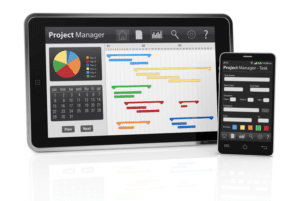
For example, businesses like airlines operate on longer cycles due to their reliance on expensive aircraft and employees who often work around the clock. All of the assets in your business are turned into products/services/cash which is then turned back again. Upgrading to a paid membership gives you access to our extensive collection of plug-and-play Templates designed to power your performance—as well as CFI’s full course catalog and accredited Certification Programs.
Step 1 of 3

This efficiency boosts the company’s financial performance by improving its liquidity—how easily it can turn assets into cash to use right away. To get the inventory turnover days, divide your average inventory by the cost of goods sold, and then multiply that number by 365. Next, calculate accounts receivable days by dividing average accounts receivable by net credit sales, followed by multiplying this result by 365. On the other hand, the accounts payable payment period indicates the company’s payment practices with its suppliers. It measures the average number of days it takes for a company to pay its suppliers after receiving goods or services.

Why The Operating Cycle is Important to Other Aspects Of A Business Like Marketing And Finance
By following these steps and accurately calculating the operating cycle, businesses can gain valuable insights into their working capital management and operational efficiency. This information can help identify bottlenecks in the production and sales process, leading to improved decision-making and financial performance. Net operating cycle measures the number of days a company’s cash is tied up in inventories and receivables on average. It equals days inventories outstanding plus days sales outstanding minus days payable outstanding. Understanding the operating cycle formula is essential for businesses seeking to enhance their financial performance. By leveraging this formula, companies can optimize their operations, improve liquidity, manage working capital effectively, and increase profitability.

Get in Touch With a Financial Advisor
It measures the average number of days it takes for a company to convert its raw materials into finished goods ready for sale. By understanding and effectively managing this cycle, businesses can optimize their operations, improve liquidity, and enhance profitability. Efficient management of the operating cycle is crucial for businesses to improve cash flow, optimize resources, and enhance overall productivity. By understanding the components of the operating cycle and how to calculate it, companies can make informed decisions that positively impact their financial health.
- If a company’s operating cycle is significantly longer than the industry average, it may indicate inefficiencies in inventory management, slow collection of accounts receivable, or delayed payment to suppliers.
- 11 Financial’s website is limited to the dissemination of general information pertaining to its advisory services, together with access to additional investment-related information, publications, and links.
- 11 Financial may only transact business in those states in which it is registered, or qualifies for an exemption or exclusion from registration requirements.
- A shorter collection period indicates that the company has efficient credit policies and is able to collect payments promptly.
- Reducing costs while also increasing speed and improving quality can be beneficial to business owners.
- If you look at the larger picture, you’ll find that the operating cycle provides an idea about the cost of a company’s operations and how quickly it can repay its debt.
- 3) Divide the average inventory figure from step 2 by the cost of sales per day figure from step 1.
- Operating cycle of working capital refers to the total number of working days that a business takes to buy inventory, sell it off, and then collect the proceedings from the sale.
- It shows that a business turns over inventory quickly and collects cash from customers fast.
- This can keep you updated on the efficiency of your inventory process, which provides insights time and again to help you reduce wastage and improve your overall processes.
- Remember, your operating cycle is not static; it requires continuous attention and adaptation to changing market conditions.
Therefore, while the operating cycle focuses solely on the time to turn inventory into cash, the cash cycle provides a fuller picture by factoring in how long the company can delay payments to suppliers. This adjustment gives a clearer view of cash flow efficiency and working capital management, showing the net duration for converting operational investments into cash. Once you have the values for the inventory conversion period, average payment period, and accounts receivable collection period, add the inventory conversion period to the accounts receivable collection period. Then, subtract the average payment period from the total obtained in the previous step. By understanding and optimizing these components, businesses can enhance their operational efficiency, reduce costs, and improve cash flow management. The operating cycle can also be made more efficient by managing your accounts payable well.

In retail, it may be days because of quick inventory turnover, whereas in manufacturing, it can extend to 90 days or more due to production time. The cycle includes the time to purchase or produce inventory, sell it, and collect payment. The operating cycle formula can compare companies in the same industry or conduct trend analysis to assess their performance across the years. A comparison of a company’s cash cycle to its competitors can be helpful to determine if the company is operating normally vis-à-vis other players in the industry.
